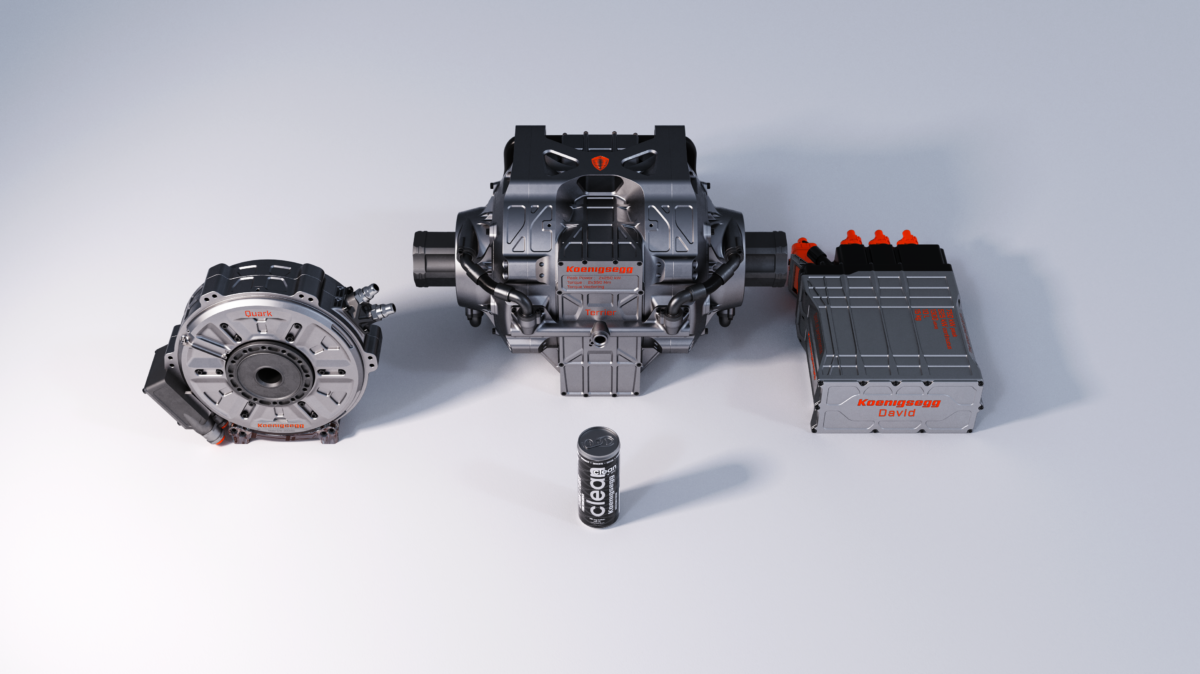Koenigsegg revealed its first in-house electric motor this week. This powertrain component is part of the brand’s technology development project that will be part of its electrified vehicle architecture. Named Quark, the electric motor is currently being used in the Koenigsegg Gemera and is a compact unit that’s intended for a broad range of applications including battery-electric, aerospace, VTOL, and marine vehicles.
The Quark electric motor uses a different approach toward fundamental magnetism, materials, cooling, and packaging. Its name references the Quark elementary particle, which is the only one to experience all fundamental forces (electromagnetism, gravitation, strong interaction, and weak interaction). Mixing radial and axial flux layouts allow for the best torque to power ratio in the industry, according to Koenigsegg. Dragos-Lihai Postariu, Design Lead for electric motors at Koenigsegg notes that the Quark is designed to improve the Gemera’s low-speed range, giving it its incredible acceleration. This allows the internal combustion component of the plug-in hybrid system to focus on the high-speed range, allowing the car to continue accelerating hard past 248 mph without any powertrain losses.
Weight is kept in check by constructing the electric motor with 300M steel, the same type used in motor sport and aerospace. Direct cooling is used for its higher efficiency and compact design. Koenigsegg’s Aircore hollow carbon fiber technology, which is used in the wheels, steering wheel, and seats, is employed on the rotor. “We not only overcame the challenge of the Gemera’s powertrain requirements but also exceeded goals of making it lighter and smaller,” said András Székely, Development Lead for electric motors at Koenigsegg. At 30 kg or 66 pounds, production examples are super light. Without the Gemera’s extra driveline functions, the Quark electric motor’s weight drops down to 28.5 kg or 63 pounds. The best part is that it’s also quite powerful at 335 hp and 442 lb-ft of torque.
Together with the Quark electric motor, Koenigsegg also showed off its accompanying EV drive unit called Terrier. The name is inspired by the dog breed and references the component’s compact size. It’s a combination of the Quark electric motor and the David inverter, resulting in high power and torque density, especially among torque vectoring drive units for electrified vehicles.
This system uses one six-phase David inverter (also developed in-house) that lends three of those to each Quark electric motor, reducing its weight, size, and components. As a result, it can slot neatly between two motors, creating a dense yet compact package. Since the Quark electric motors make power at reasonable speeds, the powertrain only needs small low-ratio, high-efficiency planetary gear sets. The Terrier’s compact size allows it to be directly elasto-bolted to the monocoque or chassis. This cuts the need for additional complexity and weight since there’s no need to add extra subframes, allowing for new luxury features to be added.
Koenigsegg currently produces three vehicles, two of which are plug-in hybrids. The Regera is the first one from the company, pairing a 5.0-liter twin-turbo V8 with three electric motors, a single-speed direct-drive transmission, and a 4.5-kWh lithium-ion battery. The total system output is 1,500 hp. Its latest vehicle, is the Gemera, a four-seat grand tourer. This uses a plug-in hybrid system that couples a turbocharged 2.0-liter three-cylinder with three electric motors, a single-speed direct-drive transmission, and a 15-kWh battery for a combined output of 1,700 hp.
